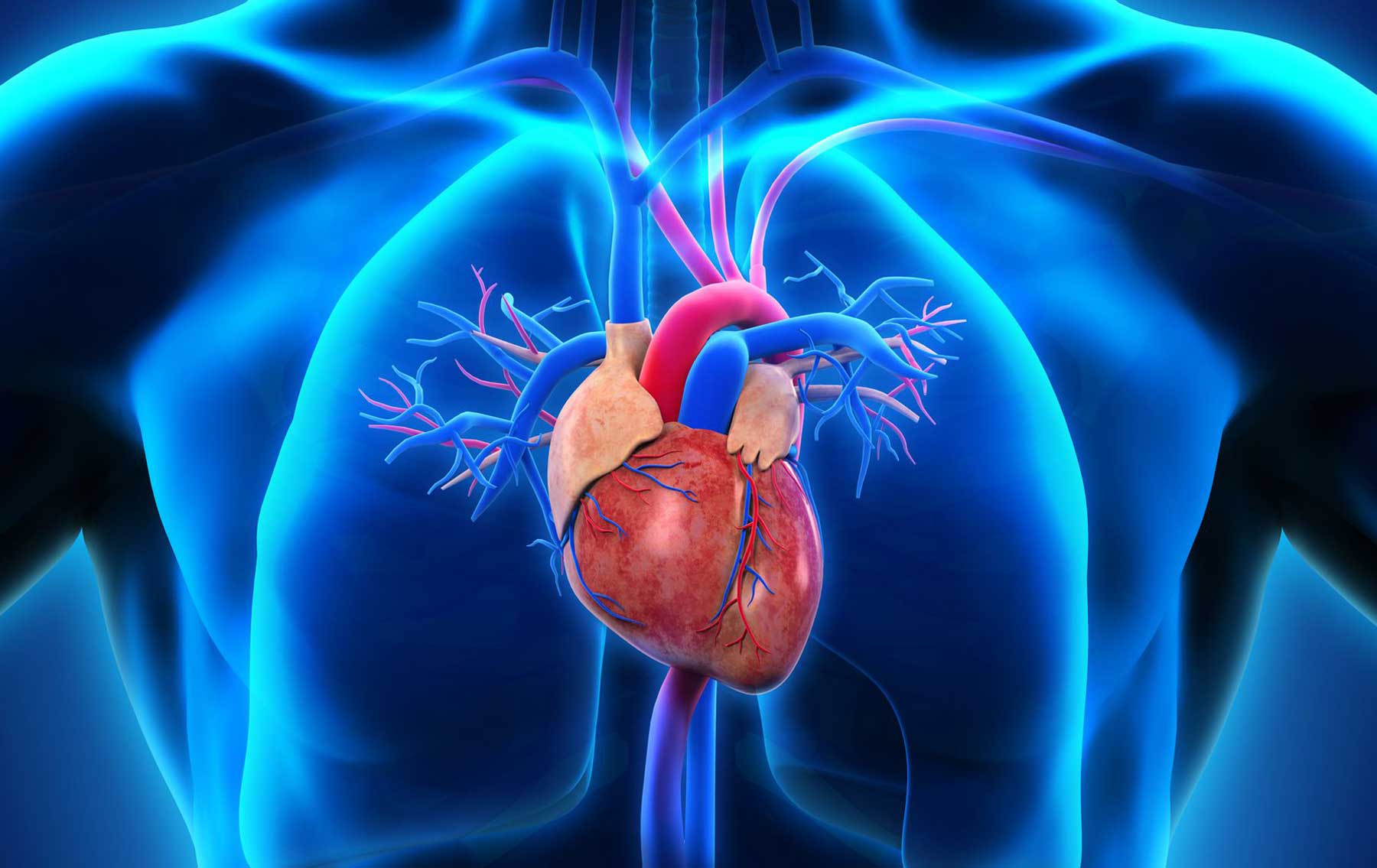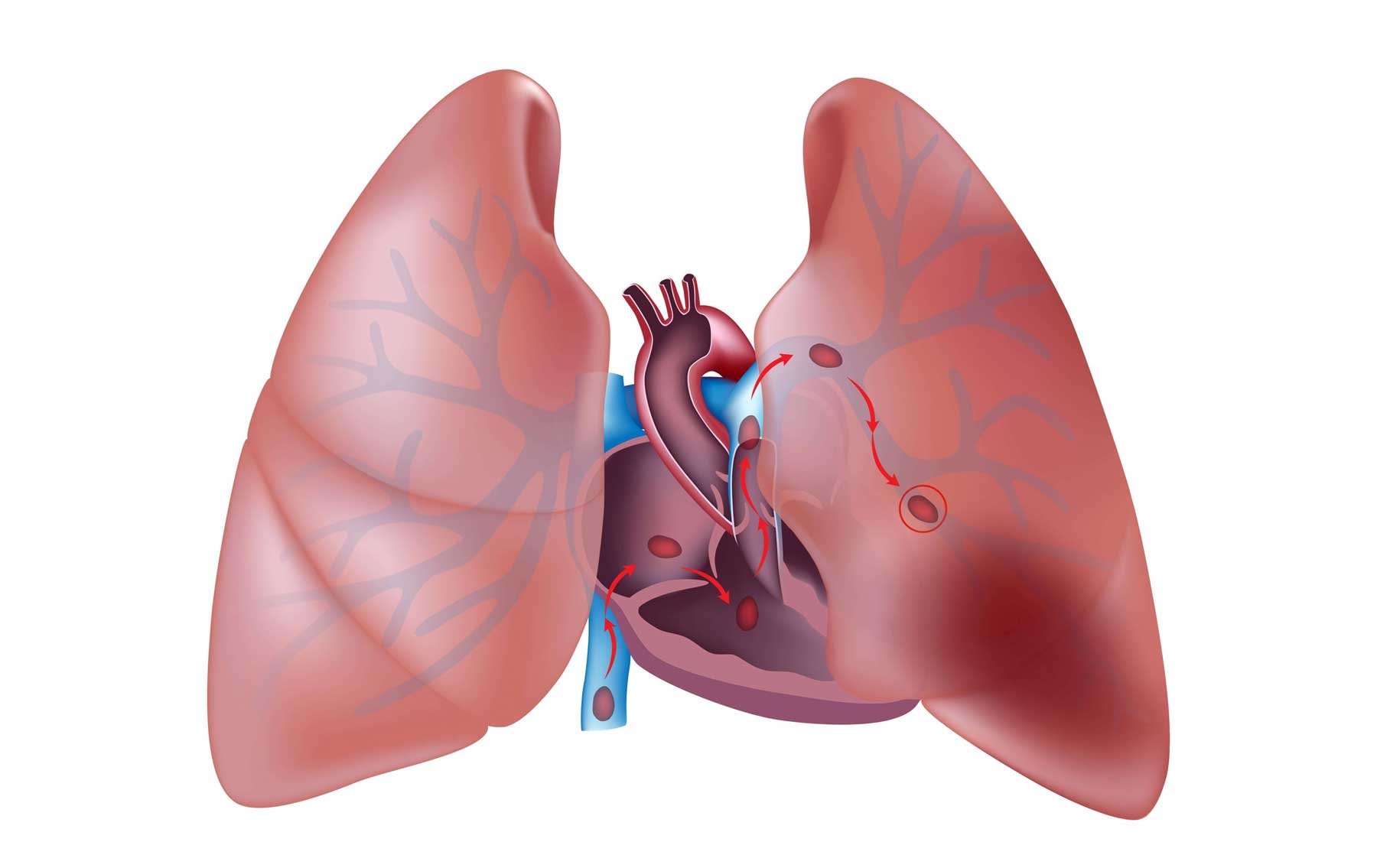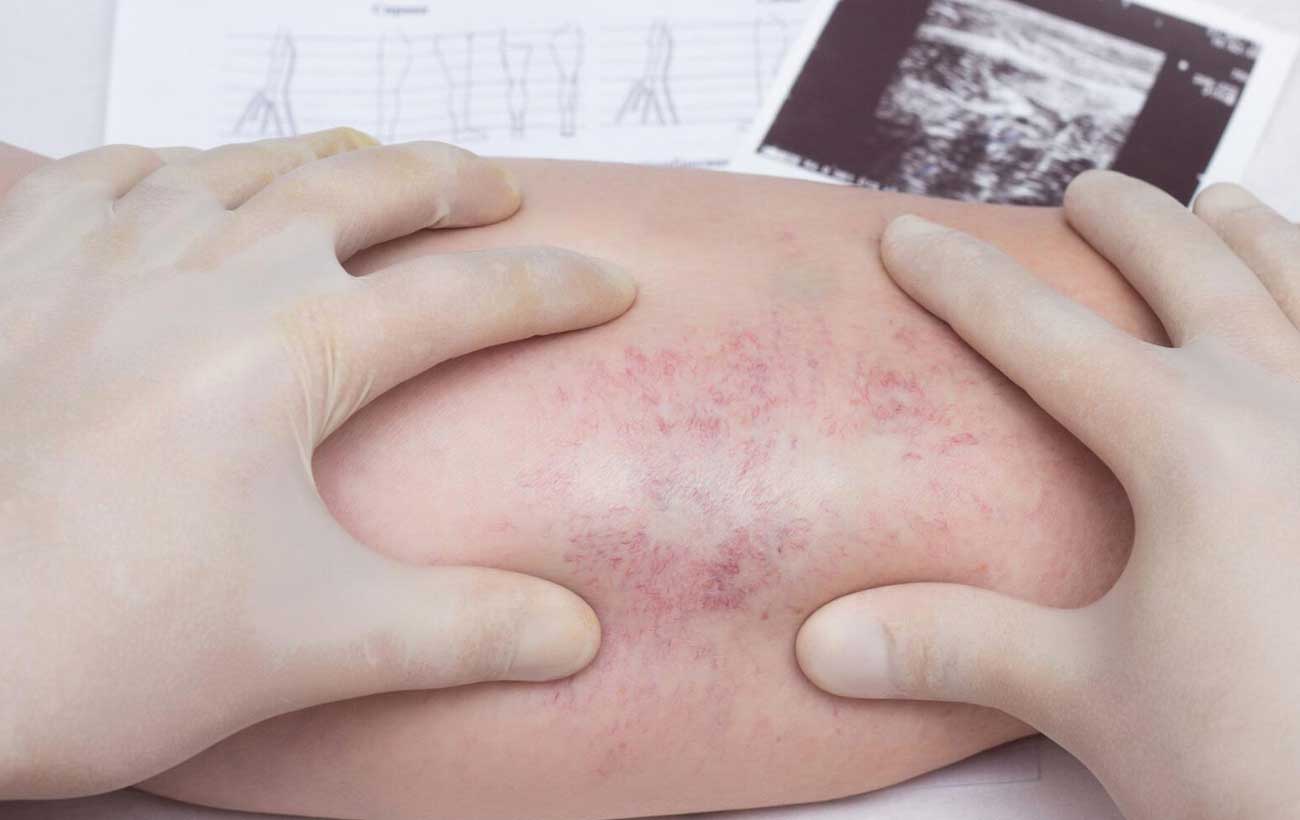Deep Vein Thrombosis Thrombosis is the formation of a blood clot (thrombus), which can partially…

Heart disease Treatments
If you have heart disease, your doctor will work with you to develop a treatment program designed to slow the progression of the disease and reduce your risk of developing potentially fatal complications such as a heart attack or heart failure. You will probably need to make lifestyle changes such as following a healthy diet, losing weight if you are overweight, exercising regularly, managing stress, and quitting smoking if you smoke. If you have high blood pressure, your doctor will prescribe antihypertensive medication. If your total blood cholesterol level is elevated, he or she may prescribe a cholesterol-lowering medication. Your doctor may also recommend surgery to bypass or clear an obstructed or blocked artery.
Medications for heart disease
If you have heart disease, your doctor may prescribe medication to improve blood flow and relieve your symptoms. You may need to take this medication for the rest of your life. If you experience any unpleasant side effects from the medication, talk to your doctor but keep taking the medication until he or she tells you to stop. Your doctor will probably prescribe another medication that does not cause the side effects. Medications used to treat heart disease include the following:
- Beta blockers. Beta blockers interfere with the effects of hormones in the body that normally increase heart rate and blood pressure. Beta blockers reduce the resting heart rate and, during exercise, limit the increase in heart rate, decreasing the body’s demand for oxygen. Beta blockers lower the risk of heart attack and sudden death in people who have heart disease and can significantly reduce the risk of death from heart disease in people who have had a heart attack. The more severe the heart attack, the more benefit these drugs provide. Possible side effects include slow heartbeat, fatigue, or erectile dysfunction (in men).
- Diuretics. Diuretic drugs lower blood pressure by causing the kidneys to eliminate more water and sodium from the body, reducing the heart’s workload. Possible side effects include a rash, muscle cramps, fatigue, or erectile dysfunction (in men).
- ACE inhibitors. ACE (angiotensin-converting enzyme) inhibitors block the production of an enzyme (angiotensin II) that causes blood vessels to constrict. These drugs are often prescribed to treat high blood pressure in people who have diabetes or heart failure. The most common side effect is a dry, irritating cough.
- Angiotensin-receptor blockers. Angiotensin-receptor blockers prevent the arteries from constricting and prevent the kidneys from retaining excess sodium and water. These drugs are usually prescribed for people who cannot use ACE inhibitors. Possible side effects include dizziness, fatigue, or stomach pain.
- Calcium channel blockers. Calcium channel blockers prevent blood vessels from constricting and interfering with blood flow. Because some of these drugs can slow the heart rate, they are also used to treat some types of arrhythmias. Possible side effects include dizziness, nausea, headache, flushing of the skin, ankle swelling, or fatigue.
- Nitrate drugs. Nitrate drugs such as nitroglycerin dilate (widen) the blood vessels, improving blood flow. Both short-acting and long-acting nitrates are available. A small tablet of nitroglycerin placed under the tongue usually relieves an episode of angina (chest pain) in 1 to 3 minutes. The effects of this short-acting nitrate drug last about 30 minutes. People who have chronic (long-lasting) stable angina are usually advised to carry nitroglycerin with them at all times. Some people learn to take the nitroglycerin just before they reach the level of exertion, they know can induce their angina. Long-acting nitrate drugs are taken one to four times daily. They are available as skin patches and a paste, which allow the medication to be absorbed through the skin over many hours. Over time, long-acting nitrates lose their ability to provide relief. Doctors often recommend that people try to go 8- to 12-hour periods without taking the drug as a way to help maintain its effectiveness. Possible side effects include headache, flushing of the skin, or dizziness.
- Digitalis drugs. Digitalis drugs strengthen the force of the heart’s contractions by increasing the supply of calcium to the heart muscle. These drugs are used to treat heart failure and arrhythmias. Possible side effects include nausea, loss of appetite, fatigue, or disturbed vision.
- Anticoagulants, antiplatelet agents, and thrombolytics. Anticoagulants, antiplatelet agents, and thrombolytics are anticlotting drugs that help prevent the formation of blood clots. Aspirin and other anticlotting drugs bind to platelets (cell fragments that enable blood to clot) and keep them from clumping on blood vessel walls, significantly reducing the risk that a blocked artery will cause a second heart attack. Thrombolytics such as streptokinase or tPA (tissue plasminogen activator) are often given intravenously (through a vein) during a heart attack to dissolve an existing clot that is blocking a coronary artery. These drugs can cause bleeding in some people.
Additional classes of medications used to also treat high blood pressure include the following:
- Alpha blockers. Alpha blockers help lower blood pressure by preventing the blood vessels from constricting. These drugs also interfere with the effects of hormones in the body that normally raise blood pressure. Alpha blockers are often prescribed in combination with other types of antihypertensive medications. Possible side effects include dizziness, headache, or mild fluid retention.
- Vasodilators. Vasodilators widen the arteries by acting directly on the smooth muscle of the artery walls. These medications are usually given only in emergencies, when blood pressure cannot be controlled with other drugs. Possible side effects include headache, increased fluid retention, and an unusually strong, rapid heartbeat (more than 100 beats per minute).
- Centrally acting drugs. Centrally acting drugs lower blood pressure by acting directly on the brain and nervous system to reduce heart rate and prevent blood vessels from constricting. These drugs may be used in combination with diuretic drugs. Possible side effects include dry mouth, dizziness, drowsiness, or fatigue.
- Peripheral adrenergic antagonists. Peripheral adrenergic antagonists widen blood vessels and lower blood pressure by blocking the effects of the stress hormone epinephrine. They may be used with diuretics. They can cause drowsiness when taken in high doses.
Cholesterol-lowering medications
If your cholesterol levels are high or if you have heart disease, your doctor may prescribe cholesterol-lowering medication to reduce your risk of developing heart disease or of having a heart attack. You may need to take this medication for the rest of your life. Cholesterol-lowering medications include the following:
- Statin drugs (HMG CoA reductase inhibitors) block the action of an enzyme called HMG CoA reductase in the liver, causing the liver to produce less cholesterol. Possible side effects include occasional muscle aches and nausea. In rare cases, liver damage may result. Currently available statin drugs include lovastatin, simvastatin, pravastatin, fluvastatin, and atorvastatin.
- Bile acid binding resins. Bile acid binding resins prevent absorption of cholesterol into the blood and stimulate the liver to remove cholesterol from the bloodstream. Possible side effects include bloating, cramping, and diarrhea. Examples of bile acid binding resins include cholestyramine, colestipol, and colesevelam.
- Fibrates. Fibrates (also called fibric acid derivatives) decrease blood levels of triglycerides (a type of fat in the blood). These drugs can also decrease LDL (bad) cholesterol and mildly increase HDL (good) cholesterol. People who take fibrates have a slightly increased risk of developing gallstones and gallbladder disease. Examples include clofibrate, fenofibrate, and gemfibrozil.
- Niacin. Niacin (nicotinic acid) is a vitamin that decreases production of LDL (bad) cholesterol in the liver. Depending on the dosage, it can also increase HDL (good) cholesterol. Possible side effects include bloating, cramping, or diarrhea. In rare cases, niacin may cause liver damage. A number of nonprescription niacin supplements are available over the counter.
Surgery for heart disease
A number of surgical procedures can be performed to treat heart disease, primarily by rerouting blood vessels around a blockage or reopening a blocked artery. These procedures include coronary artery bypass surgery, balloon angioplasty, and stent placement.
Coronary artery bypass surgery
Coronary artery bypass surgery is very effective for people who have angina and whose heart muscle has not been damaged by a heart attack. Bypass surgery is the procedure most widely used to treat heart disease caused by atherosclerosis. The procedure can improve endurance, reduce symptoms, and decrease the amount of medication a person needs to take. Bypass surgery is most likely to benefit people who have severe angina that cannot be controlled with medication, who have a normally functioning heart, and who have not had a heart attack. About 85 percent of people who have bypass surgery experience complete or significant relief from their symptoms.
Bypass surgery involves grafting veins or arteries from another part of the body onto the coronary artery to reroute blood flow around the obstruction. The surgeon usually uses veins from the person’s leg. Most surgeons also use at least one artery, usually taken from the person’s chest wall. Atherosclerosis seldom develops in the treated arteries, and most treated arteries stay open for at least 10 years after the surgery. However, if the grafted veins become obstructed, the procedure may need to be repeated.
For bypass surgery you are given general anesthesia, your heart is stopped, and you are placed on a heart-lung machine, which takes over your circulation and breathing. The machine oxygenates your blood and pumps it throughout your body. If necessary, more than one bypass can be performed during the same procedure.
Coronary artery bypass surgery
This illustration shows blood vessels that were taken from other parts of the body and grafted onto the right and left coronary arteries to allow blood flow to bypass two blockages.
A day or two after surgery, you will probably begin a cardiac rehabilitation program to help you recondition your heart, lungs, and muscles, and control your cholesterol levels. The rehabilitation program usually includes eating a low-fat diet, exercising regularly, and having lifestyle counseling designed to help you keep your heart healthy and prevent future blockages in your arteries.
Coronary angioplasty and other procedures to open arteries
Doctors perform a number of procedures to open narrowed or blocked arteries. These procedures are often used instead of bypass surgery, which is riskier and has a longer recovery time. Your doctor may recommend this type of surgery if you have angina that cannot be controlled with medication or if only one or two of your arteries are significantly blocked. Coronary angioplasty can be used to control heart disease successfully over the long term. Before any of these procedures, you will be given medication to relax you and a local anesthetic to numb the area where the medical instrument will be inserted.
- Balloon angioplasty. In balloon angioplasty, the surgeon inserts a hollow needle into the femoral artery in the groin area and threads a long guide wire through the needle, up to the heart, through the aorta, and into the obstructed artery. A catheter (a thin, flexible tube) with a tiny balloon at its tip is then threaded over the guide wire and into the obstructed artery. When the catheter reaches the obstruction, the balloon is inflated and deflated several times, for several seconds each time. The inflated balloon squeezes the plaque against the artery wall, reopening the artery and restoring blood flow. The catheter and guide wire are then withdrawn.
- Stent placement. Stent placement is essentially coronary angioplasty with one additional step. After the surgeon opens the obstructed artery with the balloon, he or she places a tiny metallic or plastic wire mesh (stent) inside the artery to keep it open. This procedure may cut the risk of reblockage (restenosis) in half.
- Radiation therapy. Radiation therapy (also called vascular brachytherapy) may be used in addition to stent placement when an artery becomes blocked again within 6 months of angioplasty. In this case, after the stent is in place, the surgeon inserts a series of tiny radioactive pellets into the artery through the catheter. The pellets emit low-dose radiation, which helps prevent scar tissue from forming and reblocking the artery. After 5 minutes or less, the pellets are withdrawn through the catheter.
- Atherectomy. In atherectomy, a catheter with a tiny surgical instrument is inserted into the femoral artery in the groin area and guided to the blocked artery. The surgical instrument shaves the plaque away in very thin layers. The shavings are then removed through the catheter.
- Laser angioplasty. In laser angioplasty, the doctor uses a highly concentrated beam of light (laser) to vaporize the blockage.
After any of these procedures, you will need to carefully monitor the area where the catheter was inserted into your artery. If you notice any swelling or bleeding, or if you have any numbness, tingling, or a feeling of coolness in your toes, foot, or leg, contact your doctor as soon as possible. You may have a blood clot or a bleeding problem that requires immediate treatment.
The success rate for angioplasty procedures is about the same as that for bypass surgery. Like bypass surgery, angioplasty may have to be repeated if the blood vessels become blocked again.



